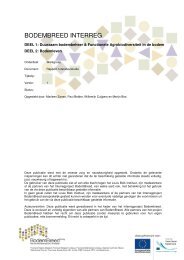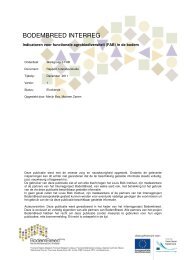Respiratory System Disorders and Therapy From a New - Louis Bolk ...
Respiratory System Disorders and Therapy From a New - Louis Bolk ...
Respiratory System Disorders and Therapy From a New - Louis Bolk ...
You also want an ePaper? Increase the reach of your titles
YUMPU automatically turns print PDFs into web optimized ePapers that Google loves.
3.3.3. A Dynamic Concept of Disease<br />
Traditionally, disease is characterized using data that can be substantiated by the physical<br />
exam <strong>and</strong> supplementary techniques such as x-radiation, laboratory tests, bacteriological/<br />
virological examinations, <strong>and</strong> others. The dynamic approach of Goethean phenomenology<br />
offers the possibility to develop a dynamic underst<strong>and</strong>ing of disease. Diseases are then<br />
described as specific dynamic disturbances of the healthy equilibrium (see also Ch.<br />
5). In health, the body is in homeostasis. In illness, this homeostasis is disturbed. The<br />
disturbance can cause a temporary dysbalance, such as we see in acute disease like<br />
pneumonia. In chronic disease, the persistent disturbance of homeostasis necessitates<br />
the creation of a new setpoint for the equilibrium. A good example of this is the blood<br />
pressure. It normally oscillates around 120/80 mm Hg. This is the healthy balance in<br />
homeostasis that may become temporarily offset by an acute shock. In hypertension, the<br />
bloodpressure oscillates around a new, higher setpoint, for example 160/100 mm Hg.<br />
This is a new, pathophysiological state of homeostasis also called allostasis. In chronic<br />
disease, the healthy balance is chronically offset. The dysbalance has become the new<br />
st<strong>and</strong>ard for the organism (fig.3.7.).<br />
In general terms, health <strong>and</strong> disease can then be described as follows:<br />
Health is a state of homeostasis with an equilibrium that oscillates around a midpoint;<br />
acute disease is a temporary dysbalance of the equilibrium; in chronic disease there is<br />
a persistent dysbalance in which the balance midpoint is reset.<br />
Which type of dysbalance is involved can be indicated for each specific disease. Below is a<br />
schematic representation of the dysbalance in asthma <strong>and</strong> pneumonia.<br />
<strong>Bolk</strong>’s Companions RespiRatoRy system DisoRDeRs anD theRapy - 51

















